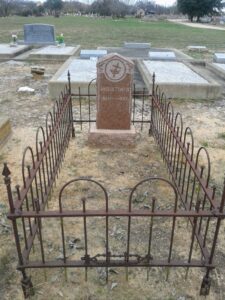May 17, 2025
PRESENTATION TITLE: Excavations of the Alamo Long Barracks and Shrine
SPEAKER: Dr. Steve Tomka
Dr. Tomka will present the results of the recent 18-month excavations by a team of archaeologists from Raba Kistner Inc. at the Alamo. The project, which was sponsored by the General Land Office and the Alamo Trust Inc., included archaeological investigations in and around the Long Barrack and the Alamo Shrine. In addition, the archival records associated with the mission were also consulted in detail to provide the basis for some of the interpretation following the fieldwork. Steve will review the new findings that came to light during the excavations and summarize the new interpretation derived from the Spanish archival records related to the mission’s founding at its third and current site.
The Long Barrack is the oldest building on the Alamo historic site. It dates back to 1724, when the site was originally Mission San Antonio de Valero.
Originally constructed as a two-story convento, this building served as the quarters and offices of the Spanish missionaries. During the 1836 Battle of the Alamo, many members of the Alamo’s garrison withdrew into this building, where they made a last stand against Santa Anna’s soldiers. Over the years, the building’s limestone walls have undergone many changes.
ABOUT Dr. STEVE TOMKA: Having been born in Transylvania, Romania, Dr. Tomka came to the States at 17 and began his studies in Anthropology and Archaeology at the University of Missouri, where he received his Bachelor’s degree in 1980. While at Missouri, through his mentors, he was introduced to the archaeology of South America, where he eventually returned to complete his Ph.D. research working among llama-herders in the Bolivian Altiplano. He received his doctorate from the University of Texas at Austin (yes, I know…) in 1994. Was hired at the Center for Archaeological Research at the University of Texas in San Antonio as a Research Assistant in 1996 and was asked to serve as the Interim- and later Director of the Center in 2001. He served in this role until Spring 2014, when he joined the Raba Kistner Environmental Inc. Team. He has worked as an archaeologist in Texas for 30 years. He is currently working on a book detailing the history of the San Antonio Missions and their indigenous occupants.


March 15, 2025
PRESENTATION TITLE: Stone Tool Cache Diversity Across the Southern Plains.
SPEAKER: Christopher Lintz
Caches are collections of diverse or similar materials collected and hidden with the intent of future retrieval and reuse. Cached materials can include such things as clusters of ceramic vessels, piles of hidden food reserved (e.g., meat reserved during winter, grains for food and next-season planting), collections of bones for making sewing and horticultural implements, mussel shells and gemstones for jewelry, and chipped and ground stone tools.
Caches are often considered to be rare discoveries on archeological sites. Still, a macro-scale analysis study reported more than 350 chipped stone caches from Kansas, Oklahoma, and Texas. Stashed piles of raw materials in distant areas, as well as “tool kit” and “tool chest” caches, represent a wide range of activities from stocking materials for trade partners, to loading distant chert-poor regions with future chert reserves, to “gearing up” for specific anticipated task activities, and even procuring broken implements from older sites to fulfill tasks or assemble imitation tool chests for teaching purposes. Interpreting a diverse range of activities represented by caches requires that people observe and report detailed information about cache contents. Simply calling a pile of implements found together “a cache” does not indicate the activities underlying the accumulation of such materials. The main goal of archeology should be to identify human behaviors behind the archeological remains we discover.
ABOUT CHRISTOPHER LINTZ: Christopher Lintz began his paid work on archeological projects during high school summers in 1963. He earned his B.A. in Anthropology from Arizona State University (1970) and M.A. (1975) and Ph.D. (1984) degrees in Anthropology from the University of Oklahoma. He has conducted/directed cultural resource management archaeology projects in 17 States and Puerto Rico over a 36-year career for various university and private consulting firms. In 2006, he became the first full-time Cultural Resource Specialist for the Wildlife Division of Texas Parks and Wildlife Department, where he managed cultural resources at 51 Wildlife Management Areas across 1,200 square miles of Texas and coordinated cultural consultation for federally funded habitat restoration projects on private lands. He formally retired in 2016 and is currently a Research Associate at the Center for Archaeological Studies at Texas State University in San Marcos.
Since 1970, his geographical research interests have focused on the southern High Plains, emphasizing ecological anthropology involving paleo-environmental reconstruction, human adaptation, settlement/subsistence patterns, architectural and community patterns, and regional interaction and exchange. He is also interested in technological trends in chert resource extraction tool manufacture and ceramic technology across the Southern Plains region with adjacent areas, especially during the Late Prehistoric Period 500 to 800 years ago. He has published over 370 reports, articles, and book chapters on various projects and research topics.
He has served as an officer or member of advisory and steering committees for the Plains Anthropological Society, the Texas Archaeological Society, the Oklahoma Anthropological Society, and the Texas Historical Commission. He is a Steward of the Texas Historical Commission. Several of his projects have been recognized with Merit in Archaeology Awards by the Texas Historical Commission. He has received a Lifetime Achievement Award from the Panhandle Archaeological Society, the Lifetime Membership Award from the Hill Country Archeological Society, was recognized as a Fellow by the Texas Archaeological Society, and the recipient of the Distinguished Service Award from the Plains Anthropological Society.


January 18, 2025
PRESENTATION TITLE: What happens after the dirt: The continuing lifecycle of artifacts and records in a repository.
SPEAKER: Marybeth Tomka
The presentation will discuss the forgotten parts of archeology. It will focus on the state of collections “curated” many years ago, how the standards have changed, and why so many of our collections need to be rehabilitated to be accessible. The takeaway will be how the storage conditions of the documentation and artifacts affect the collection’s usefulness for research years down the line, with an emphasis on tracking what happened in between.
ABOUT MARYBETH TOMKA: Marybeth has a bachelor’s and master’s in Anthropology-Archaeology from UT-Austin. Originally from New York, she has lived in Central Texas for 47 years. She has worked with state agencies, CRM firms, and the UT system as a lab director, project manager, and curator of collections. In 2012, she received her Professional Certification in Collections Management from the University of Victoria in Canada. Although she has done both fieldwork and lab work/curatorial duties, having a family and a spouse also doing archaeology, doing curatorial work has been the highlight of her career. She retired from UT Austin – TARL in 2022 and formed Argyle Archaeological Services to do curatorial consulting and training. She is currently subcontracting on several projects and doing some repatriation consulting.
Marybeth has been active in the Texas Archeological Society for the last 40-plus years as an officer, a committee chair, a ceramics academy instructor, and a committee member, receiving a President’s Award and a Distinguished Service Award for her service. She is also active in the Council of Texas Archeologists, serving as Newsletter editor, committee chair, and committee member since 1982. She has also been an active committee member in the national organizations of the Society for American Archaeology, Society for Historical Archaeology, and most recently, the American Cultural Resources Association, which has appointed her to the Archaeological Collections Consortium as one of their representatives for this collections’ advocacy group.
Finally, she loves teaching small groups about her passion for best practices in collections care and management.



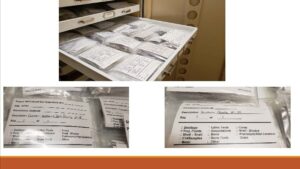
November 16, 2024
PRESENTATION TITLE: Crying Woman Ranch Fieldwork, 2023-2024 Update
10,000 Years of Ancient People in the Hill Country: 2023-2024 Excavations at Crying Woman Ranch (41KR754), Kerr County, Texas
SPEAKER: Mike McBride
Since the summer of 2018, the Hill Country Archeological Association (HCAA) has done continuous fieldwork investigations at Crying Woman Ranch (CWR), 41KR754, in western Kerr County, Texas. This presentation will review the past 2 years of HCAA’s work, including new flint artifacts recovered and new evidence of ancient Native American occupations at the site. This includes new evidence of earth oven cooking technology older than 9,000 years before the present day. These stone and dirt ovens, used for cooking wild bulb plants like Sotol and Agave, are possibly the first earth oven cooking facilities in central Texas. Adding cooked plants to the typical Hunter-Gatherer diet was the basis of the “Carbohydrate Revolution,” allowing ancient populations to grow rapidly and spread throughout Central and West Texas.
Also, several mysterious flint spear points and tools have been discovered that have rarely been reported in Texas archeology. Our research to identify these artifacts has been like detective work on evidence over 9,000 years old.
Additionally, new trenching operations have shown evidence of occupations even older than our previously recorded dates of 10,000 years ago.
MIKE’S BIO: A lifelong Texan, Mike dedicated over 45 years to pharmacy practice and management and retired in 2018. He was President of the Hill Country Archeological Association from 2017 to 2023. Previously, he was President and Board Chairman of the Dallas Archeological Society (now merged with NTAS) from 2000 to 2005. Mike is on the Board of Directors of the Gault School for Archaeological Research.
Mike has been the Principal Investigator for archaeological field projects in Dallas, Kerr, and Gillespie counties in Texas and is currently the Principal Investigator for HCAA’s Crying Woman Ranch Project in Kerr County, focusing on Paleoindian Period occupations at the site. His other current and prior work since 1984 centers around ancient Mesoamerican cultures in the Yucatan Peninsula, Central Mexico, Guatemala, and Belize. He is a co-developer with Dr. Jon Lohse of the Pine Ridge Preceramic Project in Northern Belize.
Mike lives near the beautiful Pedernales River in Fredericksburg, Texas, with his wife, Connie.
HCAA members hard at work at Crying Woman Ranch.




September 21, 2024
 PRESENTATION TITLE: “HCAA 25th Anniversary Celebration”
PRESENTATION TITLE: “HCAA 25th Anniversary Celebration”
We celebrated 25 years of archeology with cake and refreshments. Attendees were treated to demonstrations of Flintnapping, Cording, and Paintmaking. There were exhibits and pictures (shown below) from the past 25 years.
(Click on the image to view a larger version.)
July 20, 2024
 PRESENTATION TITLE: “A Deeper Understanding Through Collections”
PRESENTATION TITLE: “A Deeper Understanding Through Collections”
SPEAKER: Aina Dodge, Archeology Laboratory Director and Collections Manager, Texas Parks & Wildlife Department (TPWD)
Aina Dodge discussed the responsibilities of an archeological collections manager and how collections can contribute to a deeper understanding of Texas’s history and prehistory. Whether processing new collections or diving into legacy collections, there are always hidden clues to help researchers refine their understanding of those who lived here before us. Aina talked about finding answers to researchers’ questions and unveiling answers to questions they didn’t even think to ask. She also discussed the roles of State and Federal collections repositories and private collections.
AINA’S BIO: Aina Dodge is a native Austinite who first became interested in archeology while exploring the 1845 Davis Cemetery behind her childhood home. Aina graduated from UT with a degree in Anthropology and worked as a contract archeologist before starting at TPWD in 1993. When not working on collections management projects, Aina collaborates with TPWD exhibit planners and park interpreters to tell the story of the prehistoric and historic occupants of what are now Texas State Parks. She is also very involved with the Texas Archeological Society and has managed the field lab during the annual field school for the last four years.



May 18, 2024
PRESENTATION TITLE: “19th Century Foodways in Texas”
SPEAKER: Amanda Maloney, the Creative Assistant Producer at the Texas Center at Schreiner University
Texas has long been an intersection of people from various backgrounds. With extensive experience in historical foodways, Amanda Maloney will be presenting on 19th-century foodways in Texas, a time of rapidly changing technology and food. Amanda will discuss and demonstrate period recipes and methods throughout the lecture.
The audience had the opportunity to “taste” Texas history.
AMANDA’S BIO: Since 2005, Amanda has worked in education at natural landmarks, historic sites, schools, and museums in Texas, including sites managed by the Texas Historical Commission and The Alamo. As a Historic Farm Manager and Museum Educator, she produced various educational programs for children and adults, connecting them with history through unique, immersive historical experiences. Amanda is passionate about heritage tourism, combining her love of historic sites and immersive education with travel. Amanda has served on the board of the Texas Living History Association and the San Antonio Living History Association. She is also a member of the Association for Living History, Farm, and Agricultural Museums.
Amanda holds a Bachelor of Music degree from the University of Texas at Austin, where she completed training as a music educator. She maintains Texas Teaching Certification in History and Music. Amanda enjoys volunteering at historic sites, music, gardening, cooking, and spending time with her husband and three children. She believes in lifelong learning. Currently, she is learning farm animal husbandry by owning heritage-breed animals.
March 16, 2024
PRESENTATION TITLE: “Recent Advances in Vertebrate Paleontology, Jackson School Museum of Earth History”
SPEAKER: Dr. Steve May, Research Associate in the Vertebrate Paleontology Laboratory, University of Texas at Austin, Jackson School Museum of Earth History.
The talk included an introduction to the Vertebrate Paleontology Laboratory within the Jackson School Museum of Earth History at UT-Austin. Steve presented his research on some new Jurassic vertebrate fossils from the Malone Mountains in western Texas. These fossils are the first Jurassic-age vertebrates to be described from Texas and represent marine reptiles known as plesiosaurs. Additional recent research projects have included the description of Anchiteriomys buceei, a 15 million-year-old fossil beaver from Texas, and an analysis of the Lapara Creek Fauna from the 11 million-year-old Goliad Formation, including the history of excavation by the WPA.
STEVE’S BIO: Dr. May spent weekends during his high school years volunteering in the vertebrate paleontology department at the Los Angeles County Museum of Natural History. He received his Ph.D. in geoscience from the University of Arizona in 1985, after which he worked at ExxonMobil as a research geologist until he retired in 2014 as Chief Research Geoscientist. He then joined the Jackson School Museum of Earth History, The University of Texas at Austin, as a Research Associate in the Vertebrate Paleontology Laboratory.

All photos contributed by Dr. Steve May


January 20, 2024
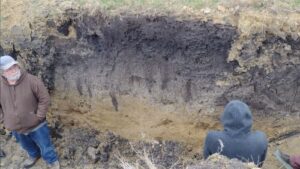 PRESENTATION TITLE: “Overview of TxDOT’s predictive modeling (PALM) program, 1997-2021”
PRESENTATION TITLE: “Overview of TxDOT’s predictive modeling (PALM) program, 1997-2021”
SPEAKER: James T. Abbott, Ph.D.
This presentation described a geoarcheologically-focused predictive modeling program of TxDOT districts that Jim conducted during his career as a Staff Geoarcheologist at the Texas Department of Transportation. Jim discussed the rationale for predictive modeling, i.e., a tool that helps assess the likelihood of archeological sites being present at different locations in the landscape, as well as the evolution of approaches he used in developing these models and the resulting differences between them and the proper and improper use of such models in planning and project development.
 JIM’S BIO: James T. (Jim) Abbott has worked as an archeologist and geoarchaeologist since 1977, having conducted fieldwork in Colorado, South Dakota, Wyoming, Texas, Northern Mexico, and Southern Italy. He has a B.A. in Archeological Studies and an M.A. and Ph.D. in Geography from UT Austin, the latter two specializing in Geoarcheology under Dr. Karl Butzer. From 1987 to 1996, he worked on a number of large projects in Texas, including Stacy Reservoir (Lake Owen Ivie), Justiceburg Reservoir (Lake Alan Henry), and a systematic re-evaluation of sites on Fort Hood. In 1997, he joined TxDOT as its staff archeologist and retired from there in 2021.
JIM’S BIO: James T. (Jim) Abbott has worked as an archeologist and geoarchaeologist since 1977, having conducted fieldwork in Colorado, South Dakota, Wyoming, Texas, Northern Mexico, and Southern Italy. He has a B.A. in Archeological Studies and an M.A. and Ph.D. in Geography from UT Austin, the latter two specializing in Geoarcheology under Dr. Karl Butzer. From 1987 to 1996, he worked on a number of large projects in Texas, including Stacy Reservoir (Lake Owen Ivie), Justiceburg Reservoir (Lake Alan Henry), and a systematic re-evaluation of sites on Fort Hood. In 1997, he joined TxDOT as its staff archeologist and retired from there in 2021.
November 18, 2023
 PRESENTATION TITLE: “From Paleo-Indians to Henry Rifles: 10,000 years of Kerr County Archeology”
PRESENTATION TITLE: “From Paleo-Indians to Henry Rifles: 10,000 years of Kerr County Archeology”
SPEAKER: Mike McBride, HCAA President
HCAA held a fun and educational afternoon for everyone who was interested in the Hill Country’s rich history.
HCAA President Mike McBride told the story of our archeological research preserving Texas History. We also displayed artifacts from the times of early settlers who braved perilous frontier times, all the way through the lifeways of ancient Native Americans who first arrived over 10,000 years ago. HCAA always invites our members, friends, and the public to learn more about our work researching the archeology of the Hill Country and meet our experts in the region’s history at our meetings.
September 16, 2023
PRESENTATION TITLE: “Early African American Families in Gillespie County and The Colored People’s Cemetery of Der Stadt Friedhof Cemetery, Fredericksburg, Texas”
SPEAKER: Dr. Paul Phillips III MD COL (ret) US Army
In the early 1850s, there was only one farm/plantation with slaves, The Doss Plantation, east of Fredericksburg, Texas. About 100 slaves/Africans were brought west to begin farming in Gillespie County. The story of these remaining families is “Lost History” in the Fredericksburg and Gillespie County communities. This presentation reveals the presence of a culture that was integrated into the community before and after the Civil War and whose story is yet to be fully told.
PAUL’S BIO: Dr. Paul Phillips III was born and raised in Fredericksburg. He graduated from Fredericksburg High School with Honors. He went on to serve his country in the U.S. Army: in addition to serving several years in the Army Reserve, he deployed overseas ten times over a 16-year period until finally retiring as Colonel from the U.S. Army in 2018, with a service record of 24 years. Dr. Phillips was awarded the Doctor of Medicine degree from the University of Texas Health Science Center School of Medicine and did his Orthopedic Residency at MLK/Drew. He is currently an orthopedic surgeon specializing in hand and microvascular surgery with a practice in Fredericksburg while maintaining membership in a number of orthopedic surgery societies. Dr. Phillips’ current work with sites of historical significance to Fredericksburg’s African-American community has him involved with the restoration of the Colored People’s Church of Gillespie County and with the newly designated Colored People’s Section of Der Stadt Friedhof in Fredericksburg. He and his wife have two sons and two daughters and are residents of Fredericksburg.
July 15, 2023
 PRESENTATION TITLE: “Excavations at the Crane Dune Site (41CR61), a Prehistoric Habitation, Lithic Cache, and Burial Site in Crane County, Texas.”
PRESENTATION TITLE: “Excavations at the Crane Dune Site (41CR61), a Prehistoric Habitation, Lithic Cache, and Burial Site in Crane County, Texas.”
SPEAKER: Robert Lassen, Ph.D.
The Crane Dune site (41CR61) was identified by archaeologists working for AmaTerra, an environmental consulting firm, during a survey on behalf of the Texas Department of Transportation (TxDOT) before the widening of Highway 385 in Crane County, Texas. The site is primarily Late Prehistoric in age, but a diffuse Archaic component and a possible Paleoindian occupation were also encountered. The site is centered on stabilized sand dunes, and the densest cultural occupation spans a 40-50 cm thick dark anthrosol layer consisting of charcoal-stained sand with abundant cooking features. Also identified at the site was a lithic cache of flake blanks and two human burials. Other artifacts from the site include dart and arrow points, occasional groundstone and ceramic sherds, chert and quartzite debitage, occasional obsidian flakes and tools, faunal material ranging from rodents to bison, and kaolinite and turquoise pendants and beads from the burials. The Crane Dune site provides a wealth of archaeological data in an under-studied region of West Texas.
 ROBERT’S BIO: Dr. Lassen earned an MA in anthropology from Texas A&M and a Ph.D. from the University of Tennessee. He is currently Principal Investigator for AmaTerra Environmental, Inc., an Austin-based company that deals with cultural resources such as archaeology and historical architecture as well as biology and hazardous materials, to assist with construction projects that have state or federal involvement and therefore have to account for archaeology, historic buildings, and endangered species. Robert specializes in lithic analysis, particularly in Paleoindian lithics and the peopling of the Americas.
ROBERT’S BIO: Dr. Lassen earned an MA in anthropology from Texas A&M and a Ph.D. from the University of Tennessee. He is currently Principal Investigator for AmaTerra Environmental, Inc., an Austin-based company that deals with cultural resources such as archaeology and historical architecture as well as biology and hazardous materials, to assist with construction projects that have state or federal involvement and therefore have to account for archaeology, historic buildings, and endangered species. Robert specializes in lithic analysis, particularly in Paleoindian lithics and the peopling of the Americas.
May 20, 2023
PRESENTATION TITLE: “Rancid Rumors or Native Wisdom? Evaluating the Efficacy of Insect Repellents Attributed to Historic Period American Indians”
SPEAKER: Dr. Gus Costa
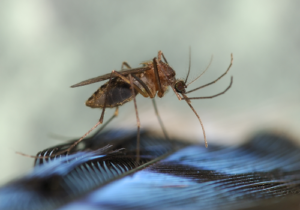 Little is known of Native American adaptations to mosquitos before and following the swap of Old and New World culture, flora, fauna, and microbes. Some accounts allege that rancid animal fats were employed by Gulf Coast native peoples as a mosquito repellent. Although many ethnobotanical remedies for biting insects have been recorded, the use of animal products for this purpose is less well-known. Moreover, few, if any, supposed traditional Native American repellents have been examined using controlled modern laboratory methods that test for repellency. Dr. Costa will share the results of an experimental archaeology study that tested the efficacy of four kinds of rancid animal fats (alligator, bear, shark, and fish) as mosquito repellents. The results of these experiments are considered more broadly and in light of the historical record of colonialism and ecological imperialism in North America. The adoption of repellent by American Indians may reflect a novel adaptation to the introduction of Old World mosquito-vectored disease. (Picture above provided by the CDC).
Little is known of Native American adaptations to mosquitos before and following the swap of Old and New World culture, flora, fauna, and microbes. Some accounts allege that rancid animal fats were employed by Gulf Coast native peoples as a mosquito repellent. Although many ethnobotanical remedies for biting insects have been recorded, the use of animal products for this purpose is less well-known. Moreover, few, if any, supposed traditional Native American repellents have been examined using controlled modern laboratory methods that test for repellency. Dr. Costa will share the results of an experimental archaeology study that tested the efficacy of four kinds of rancid animal fats (alligator, bear, shark, and fish) as mosquito repellents. The results of these experiments are considered more broadly and in light of the historical record of colonialism and ecological imperialism in North America. The adoption of repellent by American Indians may reflect a novel adaptation to the introduction of Old World mosquito-vectored disease. (Picture above provided by the CDC).
GUS’ BIO: He is an independent consulting archaeologist who provides specialist support in geoarchaeology, artifact, and faunal analysis. Gus earned a doctorate focusing on paleoanthropology at Indiana University. Gus is an adjunct lecturer at Rice University, where he has taught courses in geoarchaeology, paleontology, paleotechnology, and Asian Prehistory, and an independent consultant primarily in Geoarchaeology working for various CRM firms in Texas and across the south.
March 18, 2023
PRESENTATION TITLE: “An Update on Bonfire Shelter: Research and Restoration”
SPEAKER: Dr. David Kilby


Bonfire Shelter is famous for preserving evidence of the oldest and southernmost “bison jump” in North America and
includes additional archaeological deposits ranging through the Archaic and Late Prehistoric periods. The Ancient Southwest Texas Project (ASWT) at Texas State University is currently wrapping up field research at the site that began in 2017 and is starting to formulate some conclusions. Equally important, ASWT is taking measures to restore the Bonfire Shelter and preserve this important site for the future. This presentation will review some tentative results of our field research, including a possible connection to nearby Eagle Cave and an overview of our preservation efforts.
DAVID’S BIO: Dr. Kilby is a Professor in the Department of Anthropology at Texas State University and Director of the Ancient Southwest Texas Project. His research focuses on the archaeology of the earliest inhabitants of the Americas, with particular emphasis on the relationship between Ice Age foragers and the changing physical environment of the North American Southern Plains, West, and Southwest.
January 21, 2023
PRESENTATION TITLE: “Arrowheads, Guns, and Fossils: Stories of Hill Country History”
In partnership with the RNC, HCAA held a fun and educational afternoon for all those interested in the rich history of the Hill Country; all the way from the age of the dinosaurs millions of years ago, through the lifeways of ancient Native Americans, and stories of settlers and lawmen who braved the perilous frontier times.
The afternoon began with a brief opening presentation by HCAA President Mike McBride describing the history of HCAA archeological work, and invitations to join our membership. We will feature a raffle featuring a replica flint Corner Tang Knife and Pedernales point, a hand-carved wood bowl, books, and New Mexico Turquoise and silver jewelry.
After the opening presentations, guests visited exhibits set up on the grounds of the RNC, including:
- Arrowheads, stone tools, artifacts, and stories of Ancient Native Americans with local archeologists and historians.
- Guns and ammo of the Civil War and Frontier-era, and stories of “Frontier-Style” justice, with a local historical weapons expert.
- A flintknapping demo showing the manufacture of ancient stone tools with a Master Flintknapper.
- A book fair featuring history, archeology, and geology titles.
- In coordination with RNC, presentations on their new exhibit “Fossils: Clues to the Past” with Karen Clint, Program Director at Riverside Nature Center.

November 19, 2022
PRESENTATION TITLE: Hill Country Archeological Assn: Discovery of 10,000 Year-Old Paleo-Indian Occupations in Kerr County
The PowerPoint lecture presented over 20 years of HCAA’s work in the Hill Country. We have researched and documented over 10,000 years of occupation of the region, ranging from historic cemeteries and settler homesteads to ancient hunter-gatherer Indian sites. Our current work at the Crying Woman Ranch Project has uncovered some of the oldest evidence of Native Americans’ presence at over 10,000 years ago.
Invite your friends to learn about Hill Country archeology.
- It’s time to join or renew your membership for 2023.
- Raffle for a beautiful Biface created by our President, Mike McBride.
- Archeology books for sale to benefit our organization’s work.
- An opportunity to tell us what you want to see and do in 2023.
- See examples of points, tools and other artifacts found in the hill country.
- Nominate new board members for 2023 and meet your fellow members.


July 16, 2022
PRESENTATION TITLE: “Trade Items and Historic Artifacts Recovered from an Archaic Site on the Guadalupe River”
SPEAKER: Teresa “Terry” Farley
Initial excavation by the Hill Country Archeological Association began in 2018, and excavation continues at site 41KR754. Not locally sourced artifacts have been recovered in an archaic assemblage at a multi-component site located on the north branch of the Guadalupe River in west Kerr County. Trade items discovered in situ include obsidian sourced to Malad-Wright Creek, Idaho, crystal quartz and vein quartz, hematite spheres, ochre, and Caddo, Doss Red, and Leon Plain pottery sherds as well as a burnt clay ball. Historic items recovered from the site include .44 Henry cartridges & other munitions, glass shards, horse tack, and square nails. Projectile points from the archaic site span the middle archaic to late prehistoric Toyah periods. Faunal remains from the archaic site include Bison bison, turkey, canid, and deer.
TERRY’S BIO: Terry Farley is vice president of the Hill Country Archeological Association, a member of the Texas Archeological Society, and a member of the Texas Archeological Stewardship Network. She is also the chairperson for the Cemeteries Committee of the Kerr County Historical Commission.



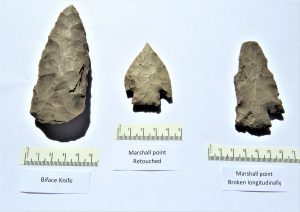
May 21, 2022
PRESENTATION TITLE: “Hearthstone Project – The Next Step in Understanding Lower Pecos Rock Art”
SPEAKER: Jessica Lee Hamlin, Shumla Executive Director
Jessica told about Shumla’s newest cutting-edge endeavor, the Hearthstone Project. It was a comprehensive study and documentation of prehistoric art in the Lower Pecos Canyonlands of Texas and adjacent Mexico. Near the confluence of the Rio Grande and Pecos Rivers, archaeologists have identified over 300 rock art sites. The Hearthstone Project focuses on the oldest and most widespread type in the region, Pecos River style pictographs, created with multi-colored paints in many shades of red, yellow, black, and white as early as 4,000 years ago. In the Lower Pecos, it seems that each discovery brings 100 more questions. There’s so much left to learn!
JESSICA’S BIO: From an early age, Jessica Lee Hamlin was fascinated by archaeology. She attended her first field school at 16, and the hook was set. As a freshman in college at Texas A&M University, she met Carolyn Boyd, a Ph.D. candidate writing her dissertation on the rock art of the Lower Pecos Canyonlands of Texas. Carolyn invited Jessica to join her in the field in the summer of 1997. Seeing the magnificent ancient murals was an experience that changed the course of Jessica’s life. Together they dreamed of an organization whose mission was to study, protect and share the murals. In 1998, Carolyn founded their dream 501(c)(3) rock art organization, hired Jessica, and graduated with her Ph.D.
Jessica’s path after graduating in 2000 took her to the Smithsonian Institution and Crow Canyon Archaeological Center. In 2006 she completed her Master’s in Human Geography at the University of Texas in Austin. Unfortunately, archaeology positions were scarce at the start of the economic downturn. So, she took a position as a Communications Consultant with the international management firm Towers Perrin. Through it all, her connection to Carolyn and Shumla stayed strong. She even joined Shumla’s Board of Directors in January 2013.
By 2014, Jessica was a Senior Consultant designing and managing Communications and Change Management strategies for large nationwide firms. That year, the Shumla Board of Directors decided it was time for Carolyn to move from Executive Director’s administrative and fundraising role to focus on the research she had pioneered. Jessica, as she drove away from that meeting through the purple landscape of a Lower Pecos cenizo bloom, decided she wanted the job. Becoming Shumla Executive Director in March of 2015 was a homecoming and a perfect fit for the specific experience she had gained since her first field school.
Since taking her position at the helm of Shumla, Jessica has ushered the organization through the achievement of a National Historic Landmark designation for the Lower Pecos Canyonlands Archaeological Region, raised funds to endow a Research Professorship at Texas State University for Dr. Carolyn Boyd, funded and oversaw the four-year Alexandria Project that documented 235 rock art sites across the region and opened a second Shumla office in San Marcos, Texas.


March 19, 2022
PRESENTATION TITLE: The Jack Allen Site: The 1969-1970 Investigations at a Pickett-Post House in the Texas Panhandle: Explorations in Cultural Variations
SPEAKER: Christopher Lintz, Ph.D. Former Archeologist with Texas Parks & Wildlife, currently a Research Associate at the Center for Archaeological Studies at Texas State University in San Marcos, and Archeological Steward with the Texas Historical Commission
Excavations conducted during 1969-1970 investigated a ca. 650-year-old adobe and picket-post house affiliated with the Antelope Creek phase (A.D. 1200-1500). The intensity of the fire that burned the house-baked the adobe daub that covered the walls and much of the adobe roof. While most of the other semi-subterranean residential houses of this distinctive culture are only known from their foundation footprints, the preservation of burned adobe allowed for a reconstruction of the building’s superstructure.
CHRISTOPHER’S BIO: He received his M.A. (1975) and Ph.D. (1984) in Anthropology from the University of Oklahoma and his B.A. in Anthropology from Arizona State University (1970). He has conducted and directed cultural resource management archaeology in 17 States and Puerto Rico over a 36-year career for various universities and private consulting firms in the private sector. In 2006, he became the first full-time archaeologist for the Wildlife Division of Texas Parks and Wildlife Department, where he managed cultural resource projects on some 51 Wildlife Management Areas across 1,200 square miles of Texas and coordinated cultural resource consultation for federal grants for habitat restoration projects on private lands. He retired after ten years from TPWD in 2016 and is currently a Research Associate at the Center for Archaeological Studies at Texas State University in San Marcos. Read more . . .




January 22, 2022
PRESENTATION TITLE: “Life and Research in a Box Canyon of the Rio Grande”
SPEAKER: Dr. Steven L. Black, former Associate Professor at Texas State University. Currently Director of Texas Beyond History, the Virtual Museum and Cultural Legacy Center for Texas Archaeological Society.
Eagle Nest (or Mile) Canyon, a small box canyon draining into the Rio Grande near Langtry, Texas, is the best-studied archaeological locale in the Lower Pecos Canyonlands, starting with pioneering excavations and rock art illustrations in the 1920s and 1930s. During the most recent era, Texas State University’s Ancient Southwest Texas Project (ASWT) and the Shumla Archaeological Research and Education Center have taken a tag-team approach employing state-of-the-art excavation, multidisciplinary sampling, and rock art documentation methods.
ASWT researchers, TxState students, and volunteers have carried out extensive field investigations at six sites in the canyon, five of them rock shelters, the largest being Eagle Cave and the most famous Bonfire, following the mantra “Low Impact, High Resolution.” The resulting data are still pouring in, so to speak, through ongoing analyses, including graduate student and specialist studies.
Speaker Dr. Steve Black highlighted what is being learned about the Box Canyon’s 13,000+ year human record and brought fellow HCAA members up to date on ASWT research and conservation efforts. On January 22nd, Steve will be “fresh” from the 2022 Bonfire Restoration session with new tales to tell.
STEPHEN’S BIO: He has been an archaeologist since the mid-1970s. He holds a BA from UT-Austin, an MA from UTSA, and a PhD from Harvard University. Most of his career has focused on hunter-gatherer archaeology in the southern half of Texas, especially hot rock cooking. Steve retired from teaching at Texas State University at the end of 2019 but remains a research professor there. Steve is also the lead editor of TexasBeyondHistory.net, the Texas Archeological Research Laboratory public education website at UT Austin.

November 20, 2021
PRESENTATION TOPIC: Nature, Power, and Maya Royals
The HCAA November General meeting was a field trip to the San Antonio Museum of Art (SAMA) to view the fascinating new exhibit, “Nature, Power, and Maya Royals.” There was a lecture and walking tour led by Dr. Bernadette Cap, an archaeologist on this project in Belize and curator of the exhibit we saw. Click here to view the exhibit information.

September 18, 2021
PRESENTATION TITLE: Interpretations On The Technological Variability in Clovis Lanceolates
SPEAKER: Sergio Ayala, Gault School of Archaeological Research at the Texas Archaeological Research Laboratory at UT Austin
A preliminary survey of Clovis points from all regions of Texas, parts of New Mexico, and Louisiana reveal a degree of variability in Clovis lanceolate technology, meriting a re-evaluation of our definitions of Clovis. The potential causes for this technological variability and the implications will be discussed.
SERGIO’S BIO: Sergio was born and raised in Texas where he earned a science degree at Texas State University and is currently completing a PhD at the University of Exeter, UK. His area of specialization is experimental archaeology and prehistoric lithic technologies. Sergio works at the Gault School of Archaeological Research at the Texas Archaeological Research Laboratory at UT Austin. Sergio and his family currently reside in Cedar Park.



July 17, 2021
PRESENTATION TITLE: TAS Field School, 2021: A Report by HCAA Participants
SPEAKERS: HCAA Board members Terry Farley – Vice President, Françoise Wilson – Board Director, and Mike McBride – President presented a program reporting on all the exciting events of the Field School.
After a year hiatus, the annual Texas Archeological Society Field School returned in full force in June 2021. With excavations and research projects located throughout Kerr County, the event was a huge success. The event drew more than 360 participants from all over Texas and several other states. This included over 250 avocationals, 25 professional archeologists, over 30 college students, and a youth group of over 35 elementary and middle school students. Research projects included prehistoric and historical excavations, a three-day Cemetery Workshop, expert laboratory analysis, and field surveys on numerous ranches in Kerr County. We enjoyed social gatherings every evening with great food, educational programs, dancing with a live band, and other unique entertainers.
HCAA members were key participants in helping prepare for the event, as well as serving as organizers, crew chiefs, surveyors, and excavators.

May 15, 2021
PRESENTATION TITLE: “Locating and Recording Lost Cemeteries of the Hill Country”
SPEAKER: Jenny McWilliams, Cemetery Preservation Program Coordinator, Texas Historical Commission
Site identification is at the very core of preservation. Small family cemeteries are scattered throughout the Texas Hill Country. They will be lost to land clearing and development without identification and assessment. Archeologists are trained to observe the landscape and look for clues of the past. This skill will be needed to save forgotten isolated graves and small family plots. I invite you to learn more about the needs and procedures involved in finding, recording, and preserving these historic sites of the Texas Hill Country.
JENNY’S BIO: Jenny works as the Cemetery Preservation Program Coordinator for the Texas Historical Commission. Her position includes answering inquiries about cemetery law, access issues, cemetery maintenance, preservation, protection, and recording. As the Cemetery Program Coordinator, Jenny also manages the Historic Texas Cemetery designation program as well as the THC’s online Historic Sites Atlas.
Prior to her work at the THC, Jenny was an archeologist for Cultural Resource Management firms in Texas. As part of her 20-year archeological career, Jenny traveled extensively throughout Texas, often excavating graves for relocation for clients such as TxDOT, lignite mining companies, and a reservoir project.
Jenny received her undergraduate degree from Southwest Texas State University and her Master’s Degree from Texas Tech University. Jenny was raised in College Station, where her father was a professor at Texas A&M, and she currently lives in Austin.
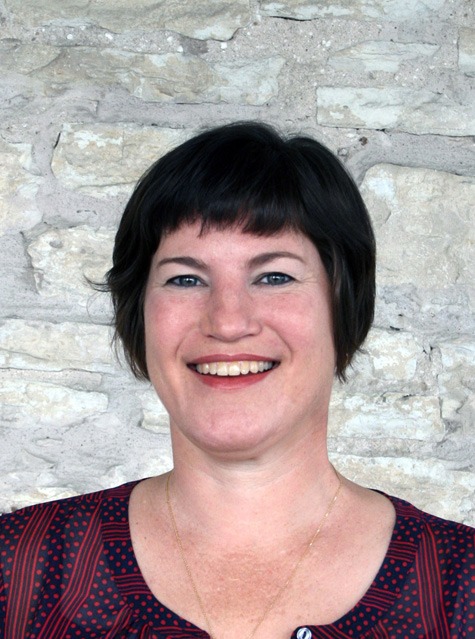

March 20, 2021
PRESENTATION: Mr. Crook reviewed the highlights of all the work to date, including specific activity areas as identified by the excavated artifacts. A complete report covering the first two phases of excavation will be published by the HAS shortly and is available to all society members as part of their membership. Non-members can purchase the report on Amazon once it is published.
DUB’S BIO: Dub Crook is a Life Member (Fellow) of the Houston Archeological Society, a Life Member of the Dallas Archeological Society, a member of the Texas Archeological Society, a member of the Center for the Study of the First Americans, a Life Member of the Gault School of Archeological Research, a Research Fellow with the Texas Archeological Research Laboratory in Austin, and a Fellow of the Leakey Foundation. He is also an Archeological Steward for the State of Texas. He is the author of over 180 papers in the field of archeology and has recently published his fourth book titled The Carrollton Phase Archaic: A Redefinition of the Chronology, Composition, and Aerial Distribution of the Early Archaic Horizon along the Trinity River, Texas.



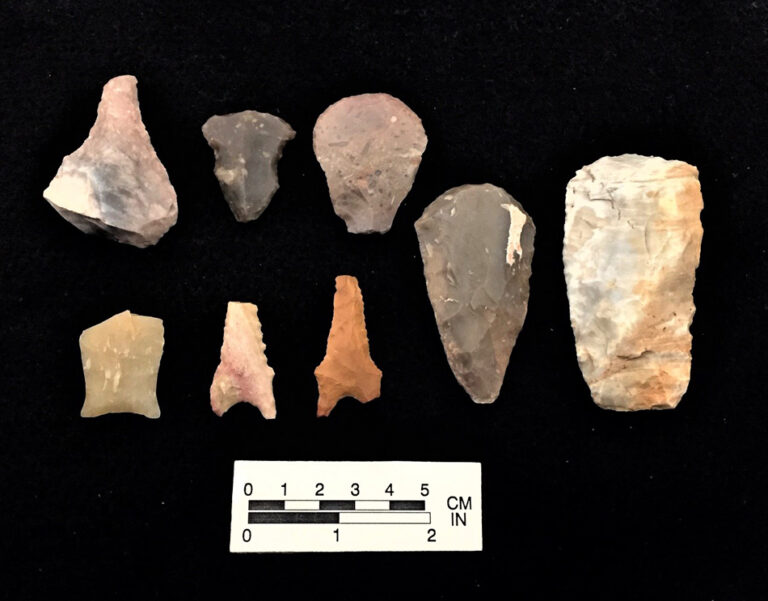
January 16, 2021
PRESENTATION TITLE: “Dogma and the Peopling of the Americas”
SPEAKER: Clark Wernecke, Executive Director, The Gault School of Archaeological Research
In 1590, a novel idea was proposed to explain the presence of humans in the New World: they must have walked here from Asia. That idea seemed better than the alternatives being floated at the time, so it became generally accepted and gradually added to it until it became the story we teach 4th graders today. With the discovery of older materials at Blackwater Draw in New Mexico, it was put forward that Clovis technology must represent these first peoples.
Unfortunately, there was never any scientific proof that this was what had happened. Popular media would have it that scientists began to doubt this train of events in the 70s with the discovery of Monte Verde though the reality is that there have been many in the scientific community who have always doubted all aspects of this idea – who, what, when, where, and why. Recent discoveries have shown that humans were in the Western Hemisphere a lot longer than previously thought and should cause us to reexamine all aspects of the old hypothesis.
Photos are of some of the oldest materials from Gault and a Clovis point from Zephyr, Texas, that was recently brought to the GSAR.
CLARK’S BIO: Clark Wernecke is the Project Director for the Prehistory Research Project at the University of Texas at Austin and Executive Director of the Gault School of Archaeological Research, a nonprofit dedicated to research and education regarding the earliest peoples in the Americas. Dr. Wernecke started his academic career with a degree in history from SMU, followed by an MBA from Northwestern University, an M.A. in Anthropology from Florida Atlantic, and finally, his Ph.D. from the University of Texas at Austin. He returned to archaeology after a business career and has worked in the Middle East, Mesoamerica, the American Southeast and Southwest, and Texas. Dr. Wernecke’s primary specialty is that of archaeological project management, but he has also written extensively on architecture and Paleoindian art.



November 21, 2020
PRESENTATION TITLE: “Surface Reconnaissance of 41PT519 with Source Identification and Regional Context of Its Obsidian, Potter County, Texas”
SPEAKER AND CO-AUTHORS: Christopher Lintz, Arlo McKee, Becky Shelton, and Will Masters III
We had a great speaker on obsidian found at prehistoric site 41PT519 in Potter County, Texas. He also discussed the sources for more than 1,500 cultural obsidian finds from across the Southern Plains. The Texas Historical Commission’s Stewards Archeological Network conducted a mapping exercise and field reconnaissance on a previously unrecorded Antelope Creek Phase hamlet on private lands north of Amarillo. Five obsidian flakes found during the site visit were geochemically sourced to the Cerro Toledo volcano in the Jemez Mountains of northern New Mexico.
In an effort to understand the cultural context of these non-local volcanic materials, a summary of sourced obsidian artifacts acquired from the southern Plains region focuses on 1,153 artifacts from prehistoric sites in Kansas, Oklahoma, and Texas. Obsidian is currently attributed to 28 volcanic sources in the continental United States (Conus) and 13 more sources in Mexico. Although several studies have discussed Southern Plains obsidian acquisition from Arizona/New Mexico, Idaho/Wyoming, and central Mexico regions, recent compilations show that rare obsidian artifacts are also derived from northern California, Nevada, and Utah.
A more focused context examines the source acquisition and chronological trends of 589 obsidian artifacts from sites within a 300 km radius of the hamlet locale in the middle of the Texas panhandle. These studies demonstrate that early Paleo-Indian people on the southern Plains brought or acquired obsidian materials from the Northwestern Plains, the Southwestern United States, and even Mexico. These source acquisitions have generally increased the number of volcanic source areas exploited and the frequency of obsidian usage throughout all subsequent prehistoric periods.




November 16, 2020
PRESENTATION TITLE: “Mesoamerican Stone Artifacts: Interesting Rocks & Where to Find Them”
SPEAKER: Mike McBride, President & Principle Archeologist, HCAA
Mike McBride discussed his surveys of quarries in Central Mexico and the Maya area and the stone tools that ancient cultures created from those sources.
MIKE’S BIO: Mike is currently the president and a principal archeologist of the Hill Country Archeological Association and has worked in archeological sites in Belize and Mexico, as well as in the Texas Hill Country. Previously, he was president of the Dallas Archeological Society for five years. In addition to his role as HCAA archeologist, he has been an experimental flintknapper for 20 years, studying and replicating the manufacture of stone artifacts of ancient North American and Mesoamerican peoples.
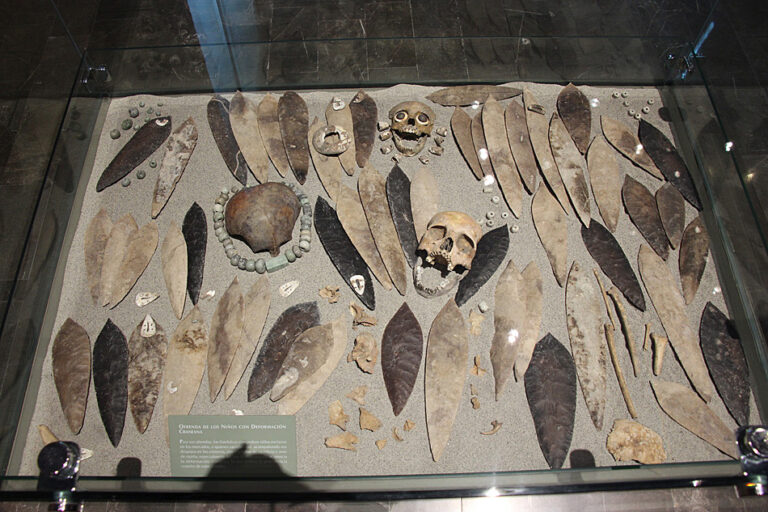




January 18, 2020
PRESENTATION TITLE: “CWR, A Newly Discovered Paleo Indian and Multicomponent Site In Kerr County, Texas”
SPEAKERS: Françoise Wilson and Steve Stoutamire, Principal Investigators, HCAA
The Hill Country Archeological Association first investigated the CWR site in July 2018 at the request of the owner of the private ranch containing the site. After surface traverses of the property were conducted, the HCAA team concluded that at least two archeological sites were present, one a rock shelter and two an occupation area with middens.
Controlled excavations of the occupation area started in December 2018 and began to reveal a rich assemblage of dart and arrow points and well-preserved animal remains, including bison bone and teeth. Also unique to this site are trade items such as Caddo pottery and cultural obsidian flakes, which are not native to Central Texas.
In August 2019, an accidental discovery of a Paleo-Indian point on the site led to the recovery of 8 Paleo-Indian points to date. The temporal span of these points ranges from at least the Middle to Late traditional Paleo-Indian period. Because almost all of the Paleo-Indian lithics have come from a relatively small area, the only one investigated thus far may hold potential for additional and even older Paleo-Indian materials.
BIOS:
Françoise Wilson is a retired foreign language educator with Master’s Degrees in Comparative Linguistics and Foreign Language Education. She is a Texas Master Naturalist in the Hill Country Chapter, a Board Member of HCAA, a Texas Archeological Society’s Education Committee member, and the CWR site’s Principal Archaeologist<
Steve Stoutamire is a retired petroleum geologist. He received a BA in Anthropology (1972) from Florida State University and an MS in Geology (1975) from Texas Tech University. Since retirement (2007), he has become an active avocational archeologist, regularly working to educate the public through archeological classes and lectures and working with private land owners to help them understand archeological sites on their property. He is a member, past president, and current field committee chairman of the Hill Country Archeological Association, a member of the Texas Archeology Society, and a member of the Center For The Study Of First Americans. He serves as a director on the Gault School of Archeological Research board at the University of Texas, Austin, and as a Texas Archeology Steward for the Texas Historical Commission.



Click here to view our Archived General Meetings


